Manual de uso Tunturi Classic 1.0 Bicicleta estática
¿Necesita un manual para su Tunturi Classic 1.0 Bicicleta estática? A continuación puedes ver y descargar el manual en PDF gratis en español. Este producto actualmente tiene 4 preguntas frecuentes, 0 comentarios y tiene 0 votos. Si este no es el manual que desea, , contáctenos.
¿Su producto tiene algún defecto y el manual no ofrece ninguna solución? Vaya a Repair Café para solicitar un servicio de reparación gratuito.
Manual de uso
Loading…


Loading…
Puntuación
Dé su opinión de la Tunturi Classic 1.0 Bicicleta estática calificando el producto. ¿Quiere compartir su experiencia con este producto o hacer una pregunta? Deje un comentario en la parte inferior de la página.Más sobre este manual
Entendemos que es bueno tener un manual en papel para tus Tunturi Classic 1.0 Bicicleta estática. Siempre puedes descargar el manual desde nuestro sitio web e imprimirlo tú mismo. Si deseas tener un manual original te recomendamos contactar con Tunturi. Es posible que puedan proporcionar un manual original. ¿Estás buscando el manual de tu Tunturi Classic 1.0 Bicicleta estática en otro idioma? Elija su idioma preferido en nuestra página de inicio y busque el número de modelo para ver si lo tenemos disponible.
Especificaciones
| Marca | Tunturi |
| Modelo | Classic 1.0 |
| Categoría | Bicicletas estáticas |
| Tipo de archivo | |
| Tamaño del archivo | 2.83 MB |
Todos los manuales para Tunturi Bicicletas estáticas
Más manuales de Bicicletas estáticas
Preguntas frecuentes sobre Tunturi Classic 1.0 Bicicleta estática
Nuestro equipo de atención al cliente busca información útil sobre los productos y responde a las preguntas frecuentes. Si encuentra inexactitudes en las preguntas frecuentes, indíquenoslo usando nuestro formulario de contacto.
Mi bicicleta estática hace un tictac cuando pedaleo, ¿qué puedo hacer al respecto? Verificado
En la mayoría de los casos, los pedales causan ese ruido. Se puede resolver quitándolos y volviéndolos a montar correctamente. También puede ocurrir que haya un cable suelto en el interior de la carcasa que entre en contacto con las piezas móviles. Retire la carcasa y conecte el cable adecuadamente o evite que entre en contacto con las piezas móviles.
Ha sido de gran ayuda (1079) Leer más¿Cuáles son los músculos que se entrenan con una bicicleta estática? Verificado
Cuando se usa correctamente, en una bicicleta estática se entrenan los músculos abdominales, los glúteos y las piernas.
Ha sido de gran ayuda (682) Leer más¿Cuánto ejercicio necesita un adulto promedio? Verificado
Como adulto, es una buena idea realizar ejercicio moderadamente intensivo durante un total de al menos 2,5 horas a la semana. Lo ideal es que esto se distribuya a lo largo de varios días.
Ha sido de gran ayuda (16) Leer más¿Cuál es la frecuencia cardíaca máxima durante el ejercicio? Verificado
En general puedes tomar una frecuencia cardíaca de 220 y deducir tu edad. Entonces, para una persona de 48 años, la frecuencia cardíaca máxima sería 220 menos 48, lo que equivale a 172. Si no está seguro de su condición personal, asegúrese de consultar a su médico.
Ha sido de gran ayuda (15) Leer más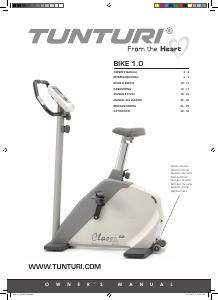


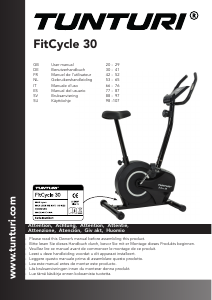
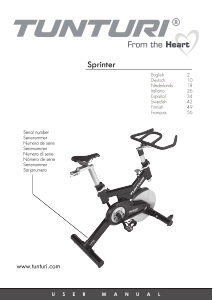
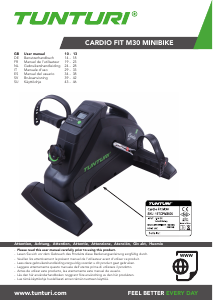

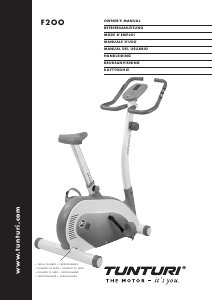
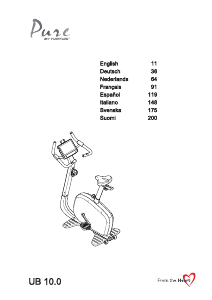
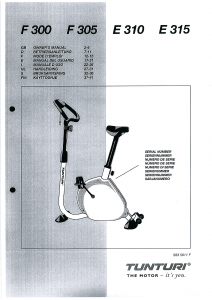
Únase a la conversación sobre este producto
Aquí puedes compartir lo que piensas sobre Tunturi Classic 1.0 Bicicleta estática. Si tiene alguna pregunta, primero lea atentamente el manual. Puede solicitar un manual utilizando nuestro formulario de contacto.